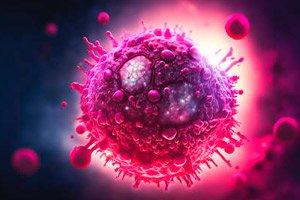
All iLive content is medically reviewed or fact checked to ensure as much factual accuracy as possible.
We have strict sourcing guidelines and only link to reputable media sites, academic research institutions and, whenever possible, medically peer reviewed studies. Note that the numbers in parentheses ([1], [2], etc.) are clickable links to these studies.
If you feel that any of our content is inaccurate, out-of-date, or otherwise questionable, please select it and press Ctrl + Enter.
How HIV-1 assembles its parts: new details on the interaction of the Gag protein with viral RNA
Last reviewed: 09.08.2025

An international team of scientists from the University of Tokushima and the National Institute of Infectious Diseases of Japan presented in Frontiers in Microbiology a comprehensive review of the molecular mechanisms of packaging of human immunodeficiency virus type 1 (HIV-1), in which the interaction of its structural protein Gag with genomic RNA (gRNA) plays a key role.
What is known about HIV-1 packaging?
HIV-1 consists of an outer shell in which viral proteins are embedded, and an inner condensed core containing two copies of its genomic RNA. The Gag protein, the "skeleton" of the virus, directs the entire process of assembling a new viral particle:
- Membrane binding: The N-terminal domain of the matrix protein (MA) recognizes specific host cell membrane lipids and localizes Gag to the desired location.
- gRNA packaging: The NC domain (nucleocapsid domain) region of Gag selectively interacts with the "ψ element" on the viral RNA, ensuring that exactly two gRNA strands are captured.
- Multimerization and scaffold formation: The CA (capsid) domain promotes the formation of six-dimensional Gag rings that organize into a young "lattice" beneath the plasma membrane.
- Virion maturation: After cleavage from the membrane, the viral protease “cuts” Gag into mature components (MA, CA, NC and p6), which leads to the formation of the infectious form of the particle.
New data on the role of Gag–gRNA interactions
The review highlights several important discoveries of recent years:
- Differential packaging of different forms of RNA. In addition to full-length gRNA, the virion can partially capture subgenomic transcripts, but it is the full-length double-stranded RNA with ψ sites that ensures the formation of complete particles.
- Regulation of the number of packages. The number of Gag monomers per vesicle formation is tightly coordinated with the presence of gRNA: its absence leads to the formation of “empty” unrealized structural proteins.
- Cross-domain interaction. The connection between the NC and CA domains overlaps the process of RNA packaging and capsid assembly: the slightest mutations in the NC lead to immature structures that are unable to infect new cells.
Methods and evidence
The authors combine data from cryo-electron microscopy, biophysical analyses of protein–RNA interactions, and cellular experiments with mutant versions of Gag. These approaches allow:
- Visualize conformational changes of Gag upon gRNA binding.
- To quantify how different ψ-elements affect the stability of the Gag–RNA complex.
- Demonstrate a decrease in the yield of infectious virions when key contacts are disrupted, confirming their indispensability.
Therapeutic perspectives
Understanding the precise molecular “locks and keys” of Gag–gRNA opens a new frontier in antiretroviral therapy:
- Search for small molecule antagonists. Drugs that prevent the binding of the NC domain to ψ elements could stop virus packaging in its tracks.
- Development of peptide inhibitors. Synthetic fragments that mimic the ψ site are able to “intercept” Gag before contact with the true gRNA.
- Combination approaches. Combinations of classical protease inhibitors and “packaging” drugs can provide a synergistic effect, reducing the likelihood of the formation of resistant strains.
Conclusion
This paper advances our understanding of the final stage of the HIV-1 life cycle, providing an evidence base for innovative interventions. Step by step, scientists are moving closer to turning the packaging of the virus’s RNA from a strength into a vulnerability, which could be an important complement to existing antiretroviral strategies.
